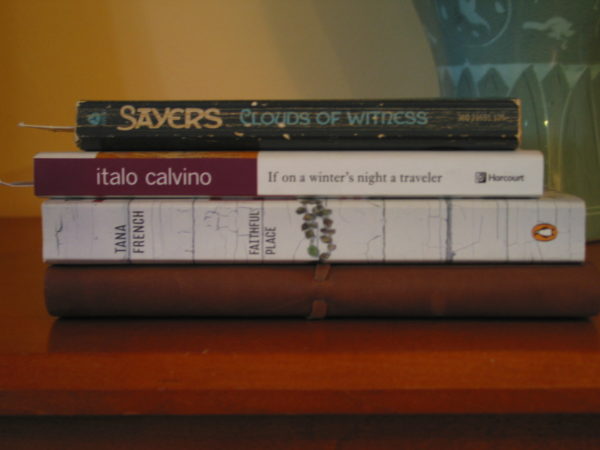 Finding good books to read when you’re an editor is difficult. You read with a pencil mentally in hand, fixing and rewriting as you read, and wondering was it the author or the editor who made that egregious error.
Finding good books to read when you’re an editor is difficult. You read with a pencil mentally in hand, fixing and rewriting as you read, and wondering was it the author or the editor who made that egregious error.
After thirty years in the publishing business, though, I’ve learned how to give my mental editor some free space. She might notice words, sentences, paragraphs, entire scenes that need work, but if the overall book is good, I let it go. Of course, I have read books that are so wonderful, my mental editor simply gazes in awe. For an example, read Consequences by Penelope Lively.
I am always reading something, and usually I read one book at a time. But then a friend or a student will hand me a book, saying that I have to read it because it is so good or because he or she wants my opinion. If the book intrigues me, I’ll halt reading my current book and start the new one. Other times, I’ll set a book aside for one reason or another, leaving it on my nightstand to be picked up again later. Such has been the case the past several weeks, and so I have three books on my nightstand right now. First, If on a winter’s night a traveler by Italo Calvino. Recommended by a student and an absolutely fascinating read, but not a good vacation book. So I set it aside before going away for a week, opting instead for Tana French’s Faithful Place. Also a good read–French writes amazing dialogue–but I’ve read one of her books before and I know she does not do happy endings. When I was fifty pages from the end, there was a sudden death in my family. I had to stop reading Faithful Place.
So I have chosen “comfort reading” for right now–one of Dorothy L. Sayers’s Lord Peter Wimsey mysteries, Clouds of Witness. An odd collection, to be sure, on my nightstand.
How about you? Are you a one-book-only kind of reader, or do you flit about? And what makes you put a book down?


2 thoughts on “Cluttered Nightstand”
Though I am constitutionally unable to read before sleep (otherwise I’m up all night, squiddy little words boring through my brain), in a bout of insomnia I’ve often opened Calvino’s Invisible Cities, a prose poem in which Marco Polo recalls his adventures to the Great Khan. Some of the cities described are ancient and fantastical. A few are modern anachronisms—with airports and skyscrapers.
What has changed in my reading over the years is a loss of patience with what strike me as superficial novels and contrived plots. Where once I felt compelled to complete anything I started, I am now more apt to slam the covers together after a few pages if I sense a formula or the author’s attempting to manipulate the reader. (Nicholas Sparks comes to mind.) This may be a dangerous impulse as I recall beginning To the Lighthouse a half-dozen times in my twenties before the thing bit, and I understood what all the noise was about. More recently I find that I reread what I admire over and over. There are several favorites: Mrs. Dalloway, of course; Michael Ondaatji’s novels, particularly Divisidero and The English Patient; Louise Erdrich, especially The Last Report on the Miracles at Little No Horse; Ann Enright’s The Forgotten Waltz; Thea Obrecht’s The Tiger’s Wife. I’ve read all of them at least three times and, as each is available as a recording, I have even taken them on long drives or listened doing dishes. One of my teachers years back suggested that if you read Romeo and Juliet at 16 and again at 36 and 56, you would be reading three different plays. But i find that can be true even a month apart. Good writers consciously and unconsciously hide so many resonant details in their paragraphs that it may take even devoted readers more than one pass to flush them all out. In addition, as a writer, I seldom begin to absorb much in the way of technique on the first time through, but I begin to understand—again, consciously and subliminally—after the second reading.
Pride and Prejudice and Lord Peter Wimsey novels by Dorothy Sayers (as noted) are my favorite rereads. And I agree that second and third readings of well-crafted books can reveal gems–plot twists, character revelations, amazing metaphors, particularly fine writing–that I missed the first time through, too engrossed in “what happens next.” But then there are all those enticing new books, filling the shelves of bookstores and libraries. What’s a person (with a job) to do?